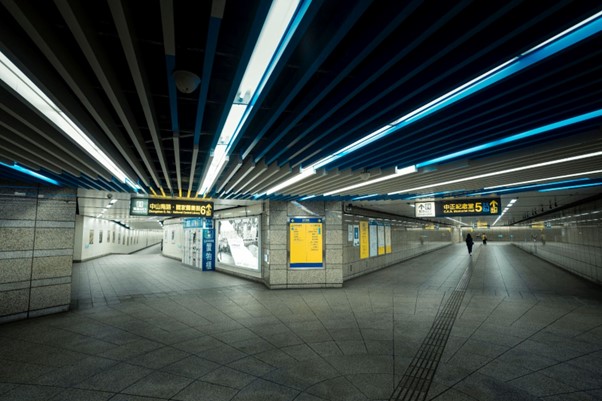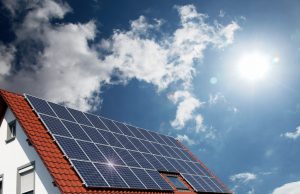
If you want to govern your lights wirelessly then must count on IoT-connected LED lighting. Do you know what technology these lighting systems use? In the last few years, IoT- Internet of Things has been getting high rates in lighting industries. IoT-connected LED lighting usually refers to a connection between IoT lighting systems. Computers, smartphones, and tablets monitor these connections either wirelessly or wired.
In this article, we’ll sum up IoT, IoT LED lighting systems. What is IoT-connected LED lighting and how can it be controlled? Additionally, discuss its benefits and applications.
What are IoT connections?
The Internet of Things, or IoT, is a network of interconnected devices that communicate and exchange data with one another and the cloud. IoT devices are often embedded with technology such as sensors and software, and they can include mechanical and digital machines as well as consumer products.
At an immense scale, IoT connections to various devices add next-level digital intelligence to communicate in real time. As IoT evolves, the number of connections increases rapidly, and IoT linked devices estimates indicate a growing tendency for installations. Typically involving large numbers of devices connecting to the internet.
There are now approximately 14 billion connected IoT devices in use, which outnumbers non-IoT connected devices such as mobile phones, computers, and tablets. By 2025, this figure is predicted to rise to 30 billion because the IoT connection makes the world around us smarter and more sensitive.
What are IoT-connected LED lighting
Connected lighting is the optimal and perfect combination of LED lighting solutions and information technologies. It uses cutting-edge IoT technology, to make lighting smarter, more efficient, and functional. Primarily, it is made up of LED lighting fixtures and sensors that are linked to a network for data transfer. This ability to receive, collect, and share data distinguishes connected lighting as a truly smart lighting solution. This extremely helps in today’s technologically driven world.
The introduction of the Internet of Things (IoT) as the foundation of connected lighting systems enables seamless communication, context-sensitive services, and data sharing between devices and things. Predominantly, changing the sector and bringing together a diverse range of vertical industries. The IoT connects these endpoints to normal Internet services and faster networks, enabling remote control and data collection from these devices.
The enormous potential of IoT-connected LED lighting is reflected in robust product development, sophisticated energy codes, and expanding supply reductions. Furthermore, IoT-connected LED lighting technology heavily focuses on improving the lighting system’s efficiency and can save up to 80% on energy costs, depending on the type of system used.
Connectivity types of IoT-connected LED lighting
There are numerous IoT connection types for all IoT device types that match IoT device requirements with the application, system, software, and devices it must connect to. While also taking into account coverage and availability at the deployment site. Some of the connectivity types of IoT-connected LED lighting are described here:
Bluetooth
Bluetooth is a short-range wireless technology that exchanges data between fixed and mobile devices over short distances. It uses UHF radio waves in the ISM bands (2.402 GHz to 2.48 GHz) to create personal area networks. Its qualities make it only appropriate for short-distance deployments.
LoRaWAN
LoRaWAN typically stands for Low-power, wide-area network. Normally, LoRaWAN is a protocol for networking that connects wireless devices with batteries to the internet via regional, national, or worldwide networks. It meets IoT requirements including communication between devices, end-to-end security, mobility, and localization services. The LoRaWAN speed rate ranges from 0.3 to 50 kbps.
BLE (Bluetooth Low Energy)
Many healthcare, security, home entertainment, and wireless beacons mostly use BLE connectivity. Regardless of Bluetooth, BLE reduces battery usage while preserving the range of traditional Bluetooth.
Sigfox
Sigfox, like LoRaWAN, is a connection technology simply to create wireless networks that connect low-power items such as smart meters. It has modest power requirements and operates on the 900MHz band, with networks in 72 countries covering 5.8 million square kilometres. Sigfox communication can accommodate up to 140 uplink messages each day, with a transmission rate of 100 bits per second.
Wi-Fi
Wi-Fi is an integral device for networking and internet access. The technology is widely used in home and small office networks, however it has great uses in businesses to link devices and give public internet access for mobile devices. Plus, IoT-connected LED lighting systems use Wi-Fi as a connection type. Wi-Fi has a range of 20-150 metres, and some versions can reach rates of over 1Gbps.
ZigBee
ZigBee is a communications technology that enables the creation of personal area networks using small, low-power digital radios. Home automation, data collecting from medical devices, and other low-power, low-bandwidth applications are typical. To minimize power usage, the device is limited to transmission lengths of 10-100 meters with a line of sight. ZigBee has a predetermined data rate of 250Kbps and is ideal for intermittent data delivery.
Benefits of IoT-connected LED lighting system
This lighting system has multiple advantages some of are:
Remote monitoring
Primarily, IoT-connected LED lighting solutions, such as PoE, are incorporated smoothly into the building’s management system. It generally employs a customized graphical user interface (GUI) that allows users to control the device remotely via touch panels.
Customization
IoT connection usually allows users to change lighting conditions merely based on their tastes or needs. For example, it allows users to adjust the intensity and color levels of the luminaires to suit their needs. Furthermore, it offers dimming, scheduling, and occupancy detection capabilities, allowing the lighting system to be completely self-sufficient.
Energy management
Modern workplace lighting solutions are heavily focused on energy efficiency. Interestingly, an IoT-connected LED lighting system not only improves the overall efficiency of a lighting system. But it may also boost the efficiency of each LED luminaire by about 15%.
Connected lighting is the lighting of tomorrow that greatly addresses the major problems of traditional lighting systems. Besides, it also increases usefulness and flexibility in modern commercial settings.
Create secure areas
Intelligent lighting such as IoT lighting can enhance public safety. Streetlights can flash to discourage people from gathering in specific areas. Embedded sensors can detect sounds like broken glass or gunshots and automatically alert the authorities. Furthermore, by incorporating surveillance cameras into lighting systems, authorities can apprehend those accused of significant crimes.
Improve the environment
Street lighting accounts for roughly 20% of total global electricity use. Cities can reduce their energy use by up to half by updating to LED bulbs and incorporating Internet of Things (IoT) connectivity into their public lighting systems. Lighting may be turned off or muted when not in use, saving resources, thanks to cellular connectivity and a centralized management system.
Reduce cost
Smart IoT-connected LED lighting solutions can result in cost reductions of up to 70%. Reducing lights during dawn or dusk, or during off-peak hours such as 12 a.m. to 5 a.m., can result in 10 to 20% savings. On the other hand, it can also detect lights that are turned on during the day and turn them off.
Applications of IoT-connected LED lighting system
IoT in lighting systems enables smart luminaires to collect and harvest data, providing useful insights into building operations and generating meaningful data. Likely, it has many applications depending upon its requirements:
Smart offices
A typical office setup includes individual desks, communal workspaces, private offices, and meeting rooms. Nonetheless, it should be adaptable to the needs like lighting, warmth, and ventilation. Multiple people can occupy the same place and perform various jobs, such as presenting utilizing A/V media in a meeting room. Hence, an IoT-connected LED lighting system can meet all these needs and make an ordinary office a smart office. In offices, IoT lighting can Improve occupant comfort by enhancing personal control, dynamic and adaptive lighting. Also, enhances outdoor connection and visual comfort.
Education
Verily, IoT-connected LED lighting provides great applications in the education sector. Like, maximize outdoor connection, integrate with other building services, provide personal control for professors or lecturers. Generally, use presence detection for energy savings, security, and personal safety.
Healthcare
Healthcare is a highly sophisticated and vital application. Sensor networks in IoT lighting systems can detect anomalous behavior and notify health services. Maintaining and cleaning high-traffic locations can be challenging due to their limited accessibility. IoT-enabled lighting systems can predict low traffic periods.
Sensor networks can collect data to improve treatment outcomes and operations. Importantly, IoT-connected lighting improves public safety during evacuations, directs response teams to patients in need, and helps track crucial equipment.
Smart streets
IoT in street illumination helps individuals navigate, stay aware of their surroundings, and feel protected. The column’s placement and structure allow for “attachments” to enhance its overall appearance.













